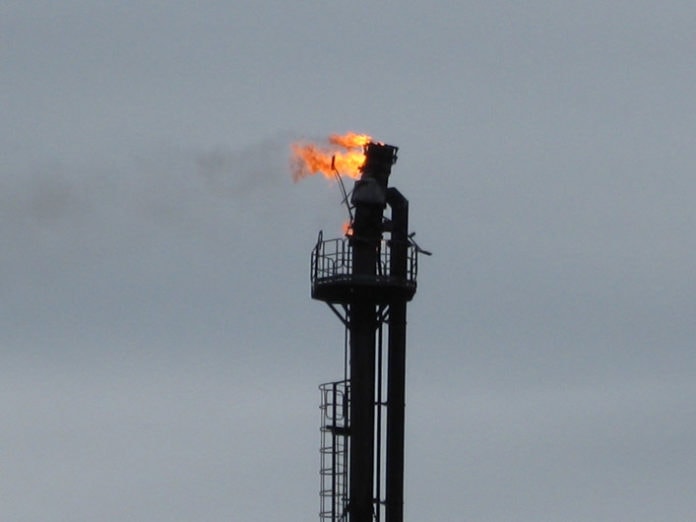If you have ever been to the oilfield, you probably noticed flare stacks with bright flames on the top.
Other places where you might’ve seen flare stacks are oil and gas processing plants.
However, gas burning is not unique to the oil and gas industry and it is also done at landfills and even water treatment plants.
This process of burning gas right on location is called flaring.
In some situations, instead of burning gas it just gets released into the atmosphere which is called venting.
The main reason why venting is more damaging to the environment than flaring is becasue methane which is the main component of natural gas is a much stronger greenhouse gas than carbon dioxide which is a byproduct of methane combustion.
Because of potential environmental damage, flaring and venting are usually strictly regulated.
In most places, companies are required to notify people living in the area before performing flaring or venting.
Related: What Is Coal Bed Methane?
Why Gas Flaring is Done?
There are a few reasons why companies choose to burn or let the gas escape instead of using or selling it.
The main reason why gas flaring is performed is becasue the volumes of produced gas are low and it is not economical to sell it.
Another reason is a lack of pipeline infrastructure which makes it challenging and expensive to transport gas to the refinery.
Related: Top 8 Uses of Natural Gas
When Gas Flaring is Done?
Sometimes during the drilling operations, a small amount of gas comes to the surface, and to prevent pressure buildups this gas needs to be quickly released.
The same happens during well unloading when small amounts of gas come to the surface and need to be removed.
The wells usually get unloaded just before going on production to remove heavy fluids from the wellbore.
Small amounts of gas are also often released during well testing and workover operations.
Lastly, there are wells that in addition to oil produce small volumes of gas that need to be removed.
Alternative Solutions to Gas Flaring
If it is not feasible to send gas to the pipeline, the first solution is to use it on location.
For example, instead of just letting gas burn, it can be used to generate electricity which can be used right on location to power the equipment.
Another option is to compress unwanted gas to make it easier to transport by trucks to the refinery where it can later be used.
Depending on location, flare gas can also be used in enhanced oil recovery (EOR) operations.
Lastly, there are newer and more creative approaches such as using natural gas produced on location to generate electricity for bitcoin mining operations.
There are already a few cryptocurrency companies that run their mining operations in the oilfield.
Read next: What is LNG and How It Is Used?
References:
capp.ca/explore/flaring-and-venting
generon.com/what-is-gas-flaring-why-is-it-done-alternatives/
